This is part of the Successful Businesses Interview Series (2011), where I feature successful businesses making a difference in people’s lives.
- SaladStop! – Healthy Meals for Modern People
- Delcie’s Desserts – Delicious, Healthy Vegan Delights
- Udders – Artisan Ice Cream Created with Care and Dedication
- Citrusox – Trendy Legwear that’s Fashionable, Comfortable and Affordable
- Dann’s Daily Cafe – Offering You Wholesome, Healthier Pescetarian Delights
- Millionaire Entrepreneur Derek Sivers of CD Baby Fame
- Groupon Singapore – Acquired for $24 Million in Less than 1 Year
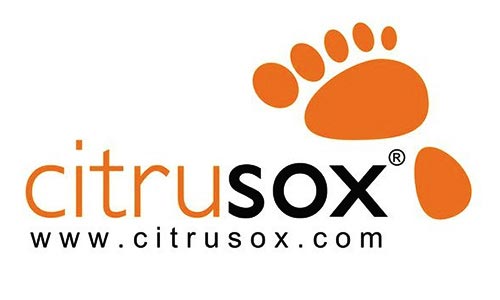
The fourth interview in our Successful Businesses Interview Series features Citrusox, the largest trendy legwear brand in Singapore. It’s a legwear haven for ladies and teenagers who are into fashionable legwear from stockings, leggings to knee high socks and socks.
I met Lena and Carol, the owners of Citrusox, 2 weeks ago, for the interview series. I was initially contacted by their PR agency after I kicked off the Successful Businesses Interview Series for potential inclusion in the series too. After checking out the Citrusox website, I thought it would be a great addition to what I’ve lined up for the series. Hence, I agreed and they then invited me down to their biggest outlet (in Bishan, Junction 8, #01-28)!
When I reached there, I was pleasantly surprised – the outlet is large, very spacious (easy for browsing), and their selection of legwear is larger than any other place I know:
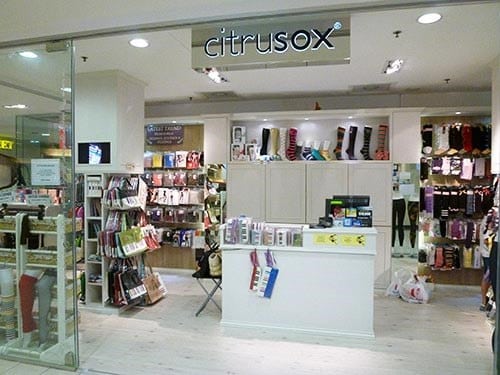
The Citrusox Outlet. They have 4 outlets right now (2 retail stores and 2 pushcarts) and will be opening a fifth outlet soon.
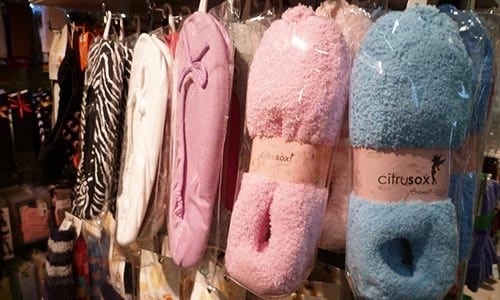
A glimpse of their in-store collection
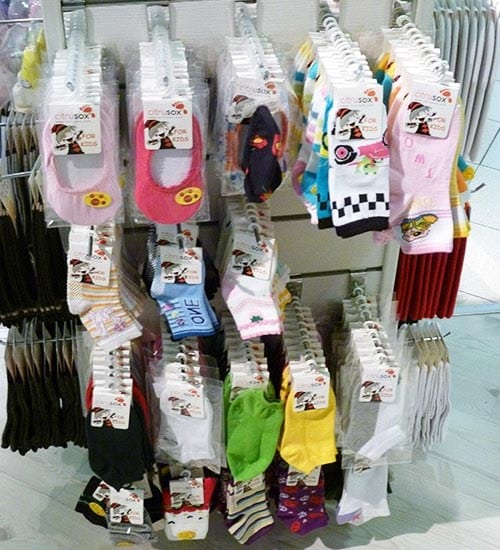
More socks
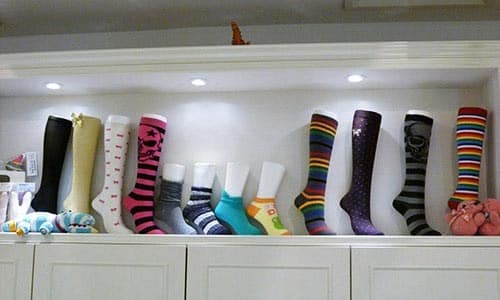
Leggings
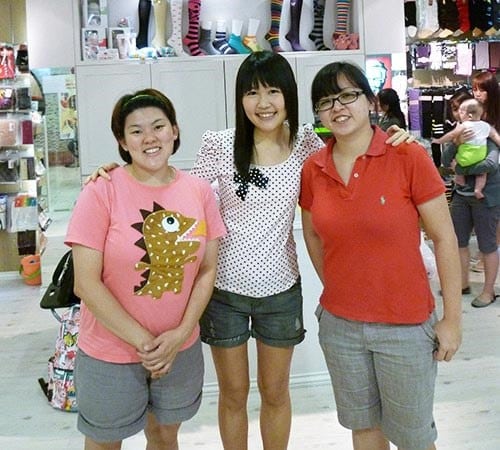
Carol (the founder of Citrusox and co-owner), Me and Lena (co-owner of Citrusox). Both of them are 32 this year.They are very chill, low key and friendly individuals.
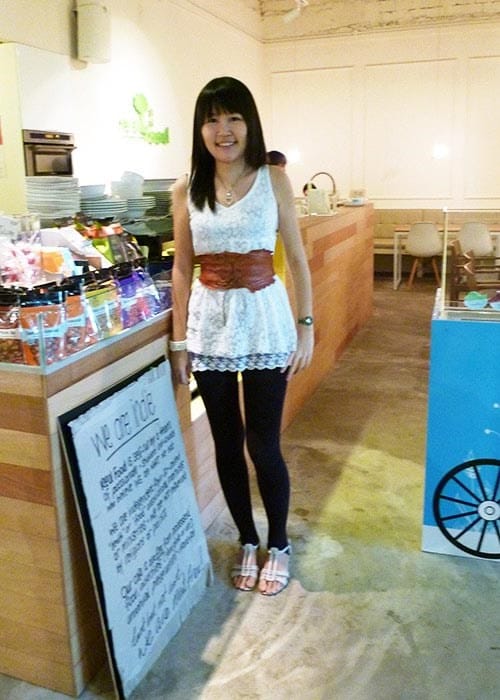
Carol and Lena were kind enough to give me a few pairs of leggings for my own use. Here, I’m wearing their open-toe dark purple leggings.
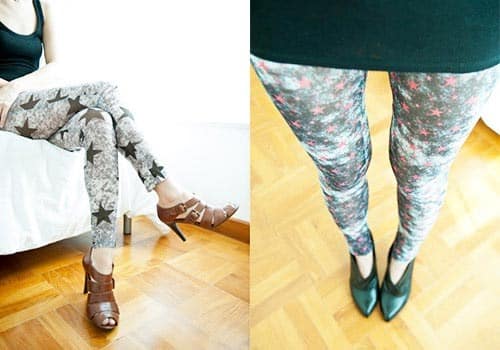
Their latest sheer leggings
When I met Carol and Lena, the co-owners, what stuck me the most is that they’re very down to earth and very personable. Despite being the owners of such a successful business today, they don’t put on any airs at all.
This is a far cry to some of the businesses I’ve approached – there was one local business which was actually scheduled to be featured in the interview series, but I took them out in the end because the poor way the PR conducted herself. I believe humility and remaining approachable and positive are important not just in business, but also in life.
Back Story on Citrusox
I love Carol and Lena’s story on how they started Citrusox – it’s probably one of the best rags-to-riches stories you can ever hear. When I was chatting with them, I couldn’t help but think how much of an inspiration their story would be for all of you out there who are planning to start your own business.
For Carol, she has always been interested to sew ever since young. Her inspiration for sewing came from her mom – every time she saw her mom sew, she would want to do so herself. The spirit of entrepreneurship can be seen budding ever since she was young too. When she was in primary school, she would sew different things, like 5 stones (5 stones was a popular childhood game with 5 little bags of beads, then sell them in school for some extra cash.
When she entered secondary school, her dad passed away. She was only 13 then. Rather than weep and moan about how unfair life was, Carol stepped up to the plate and started working while studying to relieve the financial burn for the family and to provide for herself. This began her endless venture into part-time jobs, including A&W and MOS Burger. This continued on all the way till she graduated from Polytechnic.
Carol knew Lena in secondary 3, where they were in the same class. While they went to different polys after that, they remained in touch, and as good friends too.
While Carol was in Poly, she started going to flea markets over the weekend to sell stuff, as a way to earn extra cash. She would sew things like bags, pouches, socks and hair pins with beads, and sell them at a small kiosk. Lena would help out as well. They even offered customization too. This would occupy their weekends for majority of their poly years.
After poly, Carol went straight to workforce, while Lena went on to university. After working for 2 years, Carol decided this was it – it was time to step out. She didn’t want to be in an environment where she would be forever controlled by others – it wasn’t what she saw herself doing for the rest of her life. She decide it was time to start her business and be her own boss.
In 2001, Carol started Citrusox as a pushcart in Bishan. A pushcart is a small retail space commonly found in local shopping malls. It’s a choice option for people who want to start their business but don’t want to invest heavily into a full store (which requires a straight-on 3-year lease). See below:

Examples of pushcarts in Singapore. This is in Bugis Junction. (Image)
At that time, she sold an array of different items, such as socks, bras, panties, tube tops, pouches, and so on. She had not specialized in legwear then.
It wasn’t easy. Carol was pregnant when she started the business, making it even more challenging. She had to manage difficulties such as running the business herself (Lena came in as a co-owner 4 years later), moving to different locations every 2-3 months (that’s the maximum lease allowed for pushcarts here), facing tight cashflow (since fixed costs were very high with the steep rental and stocks), and of course, her pregnancy. In order to tide over the difficult times, borrowing money from friends was a constant occurrence in the first few years because of the cashflow issue.
But Carol knew she had to make this work out. It was either she moved forward or she gave up on the business, and she chose to move forward. Day after day, she managed the pushcart. Day after day, she oversaw the different aspects of her business. Day after day, she attended to different customers and sold one item after another. And her persistence paid off.
In 2003, the mall management at Bishan Junction 8 invited her to take up an official retail store, seeing the strong performance of her pushcart business. Knowing how difficult it is to secure a store space, she took up this opportunity, and everything built on from there. That year, she launched the first store specializing in legwear (that’s the one you saw in the pictures above), which subsequently became the flagship store for the brand. Lena joined in as a co-owner in 2005, after she graduated from university.
The next few years saw the brand’s expansion as they leased more pushcarts and launched more outlets. In 2006, they were awarded third for Best Decorated Store out of 170 stores in Bishan Junction 8.
Today, Citrusox is a million-dollar business. Their monthly revenue is about $90k SGD / $72k USD, which is a lot for any local start-up.
I now bring you my interview with Carol and Lena:
Q1) Tell us more about you, Carol and Lena – What do you do at Citrusox?
Lena: Hi, I’m Lena. I’m the co-owner of Citrusox and the Operations Manager. Carol roped me in after I finished my studies to help her in the expansion of the business. I run the back office, which includes barcoding, staff training, ordering of stocks from suppliers, and so on.
Carol: I’m Carol, and I’m the founder and co-owner of Citrusox. While Lena manages the operations, I’m in charge of the buying of the stocks as well as business development. Every 2-3 months, I’ll take a trip overseas to see the fashion trends out there, then look for new, fashionable pieces to add to our collection.
Q2) What is Citrusox?
Citrusox is the largest trendy legwear brand in Singapore. Our aim is to provide legwear that’s fashionable and comfortable. Our legwear includes knee high socks, regular socks, ankle socks, non-slips, stockings, leggings, tights, etc that are both . Our best sellers are our socks and leggings.
Besides legwear, we also sell accessories, such as mobile phone MP3 socks, shoe laces and pouches.
(Celes: Socks and leggings are the core of Citrusox’s business and they never drift away from that. Every business has a core offering – know what it is and stay true to it, and that’ll help your business to grow. When you drift away from that, that’s when your brand becomes unfocused and diluted, which results in fragmented customer base.)
Q3) Who do you target?
We target people of all ages, though our primary audience are students and ladies, since we specialize in trendy and fashionable legwear.
Q4) How much revenue (USD) is your business currently generating a month (average)?
We have 4 outlets currently – 2 stores and 2 pushcarts. Our stores bring in about $50k SGD ($40k USD)/month in revenue, while our pushcarts bring in about $20k SGD ($16k USD)/month each. That’s about $90k SGD ($72k USD)/month in total.
Celes: They broke even approximately 6 months after starting their business. At their largest, they had 7 outlets, though they realized it was not a good move, business-wise. It led to manpower issues and it was difficult for them to manage. So they scaled down to 4 outlets and things have dramatically improved since then.
Q5) How long has it taken to achieve this monthly revenue?
Our first pushcart business started in 2001, so it’s already been 10 years.
Q6) How did you first come up with the idea for your business?
Carol: I’ve always had an interest in sewing when I was young. This was inspired by my mom. Whenever I saw my mom sew something, I’d want to join in and sew something of my own too. This led me to sew little trinkets such as 5 stones in primary school to earn extra cash.
Later on when I was in Poly, I spent my weekends at flea markets with Lena, selling things I sewed, like bags, pouches, socks and hair pins. Lena also helped out with the sewing as well as the customization of the products. It was satisfying to see my own creations being purchased. Hence when I decided to branch out and set up my business in 2001 (after working for 2 years), it was a natural step to sell items I was familiar with.
Q7) After you came up with the idea, how did you get started? Please walk us through what the first years of your journey were like.
Carol: I started Citrusox via a pushcart in Bishan J8 in 2001. At that time, I sold a variety of items, from tube tops, bras, bags, pouches, panties to socks. I was not specializing in socks and legwear then.
While I originally sewed my products when selling in flea markets several years ago, I decided to source for ready stocks for the pushcart business. Reason is because the former is labor intensive – it takes considerable time to create a quality product by hand, which means limited supply to match demand. You can only price up an item to an extent before it becomes unaffordable. It is much more scalable to have a larger supply and price them at an affordable price point.
In that same period, I was pregnant with my first son and managing everything myself. It wasn’t an easy job running a one-man show. It was very laborious. I had to take care of everything, from negotiating with the mall management, running the pushcart, getting the stocks, to serving the customers.
The early years were not easy. A lot of cash was invested upfront due to the rental of the pushcart ($3k SGD / $2.4k USD per month) and getting the stocks. Hence, cashflow was very tight. Many times I didn’t even have my own salary after deducting the expenses. I would put my own salary as the last priority since the business came first. Some months, I would borrow money from friends just to tide over the period. This was promptly paid back as soon as I got the cash.
Because it was a pushcart business, it was also unpredictable. The lease for pushcart is 2-3 months only – this is standard in the industry. It can’t be extended beyond that as the mall management wants variety in their store offerings. After that, I had to approach other malls to lease a pushcart space to keep business going. Sometimes my request would get rejected; sometimes it would be accepted. Hence, the location would change once every few months, from Bishan, to Bugis, to Sengkang (Compass Point), to Tampines. I had to run all over the place. It was tiring.
Through this tough period, there were times when I thought about giving up. But I didn’t know what else I would do if I was to stop doing this. I had also invested so much of myself in the business. So I persisted and didn’t give much thought about quitting. Also, it was a very satisfying feeling when I saw myself going from one place to the next, and getting more sales each month.
Finally in 2003, the mall management at Bishan J8 offered us an official store space in the mall. This was the first big milestone. I took it up and decided to specialize in selling legwear, since legwear was the most popular item in my pushcart – it made up 50% of the sales. Things built on from there, and we leased more pushcarts and launched more stores after that. Lena joined me in 2005 after she graduated.
Q8) At which point did you know with certainty that it had taken off?
When the management at Bishan Junction 8 invited us to take up an official store space inside the mall. It’s not easy to get the attention of the mall management since retail is a highly competitive industry. There have been several times in the past when we applied for a pushcart space but got rejected as they did not buy into our product offering.
This was the first point Citrusox was on the retail map. This outlet became our flagship store. Subsequently, we leased more pushcarts and launched more outlets as business grew.
(Celes: When I asked Carol if they did any special marketing or advertising to get/increase sales, Carol said no. Sales was a natural result of the traffic at the mall, which signals the importance of location in your business planning, if you’re going into retail/F&B.)
Q9) What would you say are the biggest drivers of your success today?
Lena: Firstly, our continuous emphasis on customers. We often listen to what our customers want and meet their needs wherever we can. For example:
- We know that customers like to feel the texture/elasticity of the socks/legwear before they purchase, so a lot of our items do not have external packaging. For those that do, we allow our staff to remove the packaging under the customers’ request.
- Giving the option for customers to try our socks, so they can see whether it fits them or not before buying.
- Not too long ago, we created this transparent ziploc bag that comes with our stockings. This made is easy for customers to store their stockings before/after use.
- We place a lot of emphasis on staff product knowledge and service so customers have the best in-store service.
Carol: Secondly, maintaining consistent quality of products. I’m always sourcing for good quality stocks at reasonable prices, so we can offer the best deals for our customers. That, along with ensuring we achieve a right (profit) margin for the business’ success. At the end of the day, we are running a business, so we have to ensure that our bottom-line is protected.
Thirdly, bringing in the latest, fashionable legwear into our collection. Every 2-3 months, I’ll go on a sourcing trip overseas. Before I do, I’ll take a look at the local fashion trends. I’ll also get feedback from the staff and check what customers have been looking for. For example, if they’ve been asking for sheer leggings, or legwear of a particular color.
Then when I go on my trip, I’ll look at the trends out there. There, I’ll purchase the latest, fashionable items and add them to our Citrusox collection for the season.
Q10) Looking back, what were the biggest obstacles you faced in your entrepreneurship journey to date? How did you overcome them?
Carol & Lena: Cashflow was a real problem when we first started. Because a lot of money was paid upfront for the space rental and stocks, we had little cash to work with. We also had to ensure our staff was paid on time. Often times, we would defer our salaries just so other expenses would get settled on time.
How it was addressed: During those times, we would borrow money from others to tide us over the period. We would borrow money from friends for that month, after which we would quickly pay them back when we had cash coming in again.
(Celes: Proper business planning, tracking of accounts and positive cashflow are important for any business. Business planning helps you identify targets to reach, so you’d know when you’re on-track/off-track. Accounts tracking lets you know where the revenue is coming from and where the expenses are, so you can make future plans. Cashflow ensures you get ongoing cash to buy new stock and make payments. Here, the initial oversight was plunging straight in without planning – which led to the cashflow problem. This is also why Carol/Lena mentioned the importance of planning later on in Q11.)
Carol: Manpower was another of our largest obstacles, and still is. When I first started, I was doing everything by myself. From stocks management, to attending to the customers, to negotiating with the management. It became easier when I hired staff, but then a different challenge surfaced.
Lena: This challenge revolves around (1) ensuring our staff has the right know-how (quality) and (2) having enough people to manage our operations (quantity).
For quality, we have to ensure that they have the best product knowledge as well as proper customer service. One things I always empathize to my staff is this: “There are so many places selling socks out there. Why should customers come and buy from us instead of the others?” We must make Citrusox the place they want to visit for their legwear.
For quantity, we have to ensure sufficient staff to run our operations. People come and go in employment, especially in retail. This is even more so for our push carts, which has a 2-months fixed lease. Because of that, our staff will also leave after our lease ends. We are then faced with the challenge to get new staff for the next pushcart space we secure.
How it was addressed: Proper training is very important to equip them with proper product knowledge. We always ensure a senior staff in our flagship stores. Also, we have our senior staff teach the junior staff when they first join. I also created a small manual for them to learn about the different terms and materials for the legwear, so they can serve the customers accordingly.
On number of staff, proper planning is important, so we can have enough staff at each outlet at any point. Keeping the outlets to a manageable number has also helped. Now, we only expand when we have a strong staff base, so that the quality of our service does not get affected.
(Celes: It would seem that for retail industry, hiring the right people and maintaining a consistent staff base is a continuous challenge. This is the case for Salad Stop and Udders too. This is not surprising, given that for retail, the staff is the first touch point between the business/brand and the customers. Whatever impression the customers walks away with is dependent on the staff’s expertise. How much sales the business brings in is also a function of the staff’s capabilities as well. If you’re planning to start a retail business, it’s important you factor this accordingly.)
Carol & Lena: Getting the lease approval from the mall management was another obstacle in the beginning. Being the mall managers, they have the largest bargaining power. The only thing we could do is to submit our pushcart concept, and see what they had to say. As a new business establishing its presence in the market, it was tough.
How it was addressed: There was nothing much we could do as the mall management had the final say. We could only pitch to different malls and go with whichever mall willing to take us in. We just focused on building our business.
Gradually, this caught the attention of the Bishan J8 management, who invited us to take up an actual storefront. From there we grew bigger. Nowadays the situation is different since we’re an established brand. The different mall managements would approach us of their own accord to take up pushcarts at their malls.
(Celes: Persistency is the key. You may get rejections, but that doesn’t mean it’s impossible. Just keep doing and pressing forward. Change your strategy too while you’re at it. Sooner or later, you’re going to get a different, positive result.)
Q11) What are the biggest lessons you’ve learned in this journey?
- Get the right manpower for your business – people that are both willing to learn and committed to the business.
- Ensure your base operations and quality of manpower are in place before you consider expansion plans.
- Proper cashflow management is very important.
- Taking time to plan will save you a lot of hassles later on.
Q12) If you are to start all over again, what are the top 3 things you’d do as you start your business?
Carol: The first I’d do is to understand the full list of expectations from the mall management before signing any contract. I realized from running Citrusox there are a lot of hidden costs and restrictions which you only know later when the contract is signed and you’re running the business. This created a lot of headaches at the beginning.
Second is manpower – to find someone to start the business with, so that we can run the show together. It was not easy running the business by myself at the beginning, as there were a lot of things that had to be taken care of.
Third is to manage the cashflow properly. Know how much we’re spending and how much we’re earning, and keeping a clear record of that. We did not really keep track of this at first, and it got quite messy after a while.
Q13) How would you advise someone who is just starting his/her business and wants to bring it to the million-dollar mark and beyond?
- Assuming you’re going into retail, you need to have a good amount of start-up capital. Rental is not cheap and it can quickly add up after several months. You have to be willing to forgo the money at the beginning because you may not see profits so soon.
- Do proper research. Know your customer and how big this market is. Also know what your customer wants. Just because an item sells well in Korea doesn’t mean that it will do well in Singapore.
- Take time to plan before you start your business. This includes getting the right manpower at the right time, managing cashflow, expansion plans, and so on.
- You must be willing to put in the effort and the long hours. Are you willing to give up your public holiday and your rest? Are you willing to work while others are playing? There is a lot of work that goes on behind the scenes in a business. These are things you have to do yourself when there is no one there to pick up the slack. Even though we are the co-owners with a team of staff, there are things we do ourselves, say barcode management, packaging the socks, and so on. These are questions you have to consider before you start, or else you are going to fail.
Q14) What’s next in your plans?
At the moment, our immediate focus is to (1) train our staff to provide better customer service and product knowledge (2) continue to source for products of better quality and more varieties. We are opening a new store next month (June ’11).
Special thanks to Carol and Lena for accepting this interview! Citrusox is the leading trendy legwear brand in Singapore. To find out more about Citrusox, visit www.Citrusox.com.
This is part of the Successful Businesses Interview Series (2011), where I feature successful businesses making a difference in people’s lives.
- SaladStop! – Healthy Meals for Modern People
- Delcie’s Desserts – Delicious, Healthy Vegan Delights
- Udders – Artisan Ice Cream Created with Care and Dedication
- Citrusox – Trendy Legwear that’s Fashionable, Comfortable and Affordable
- Dann’s Daily Cafe – Offering You Wholesome, Healthier Pescetarian Delights
- Millionaire Entrepreneur Derek Sivers of CD Baby Fame
- Groupon Singapore – Acquired for $24 Million in Less than 1 Year



![How To Deal with Backstabbers? [Video]](https://personalexcellence.co/files/video-backstabbers-400x267.jpg)



 I hope you find my content helpful. Join my community of 65,000 readers and get my latest articles delivered to your inbox. Your email is safe and I never send spam.
I hope you find my content helpful. Join my community of 65,000 readers and get my latest articles delivered to your inbox. Your email is safe and I never send spam.
Commenting for this post is closed.